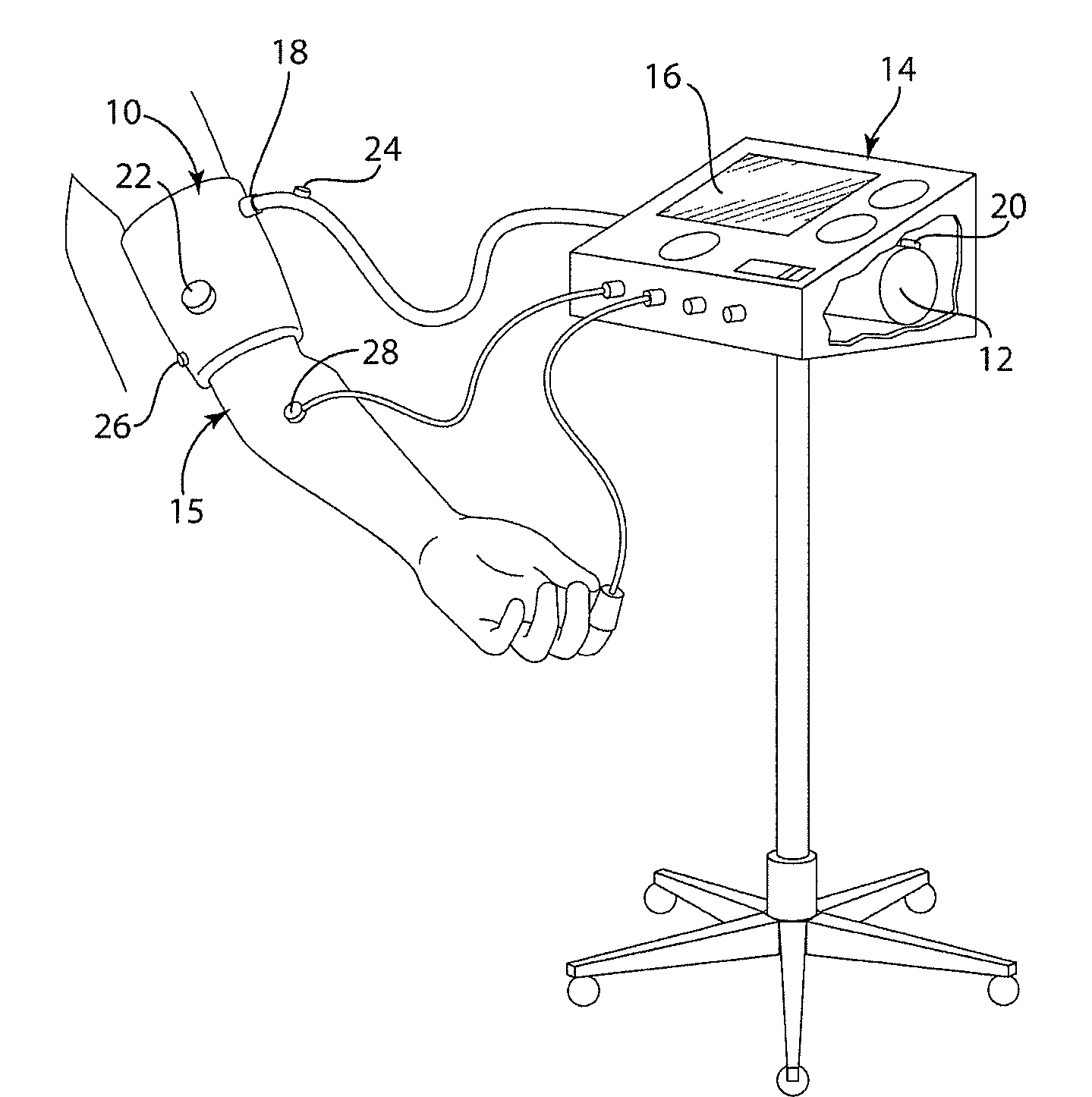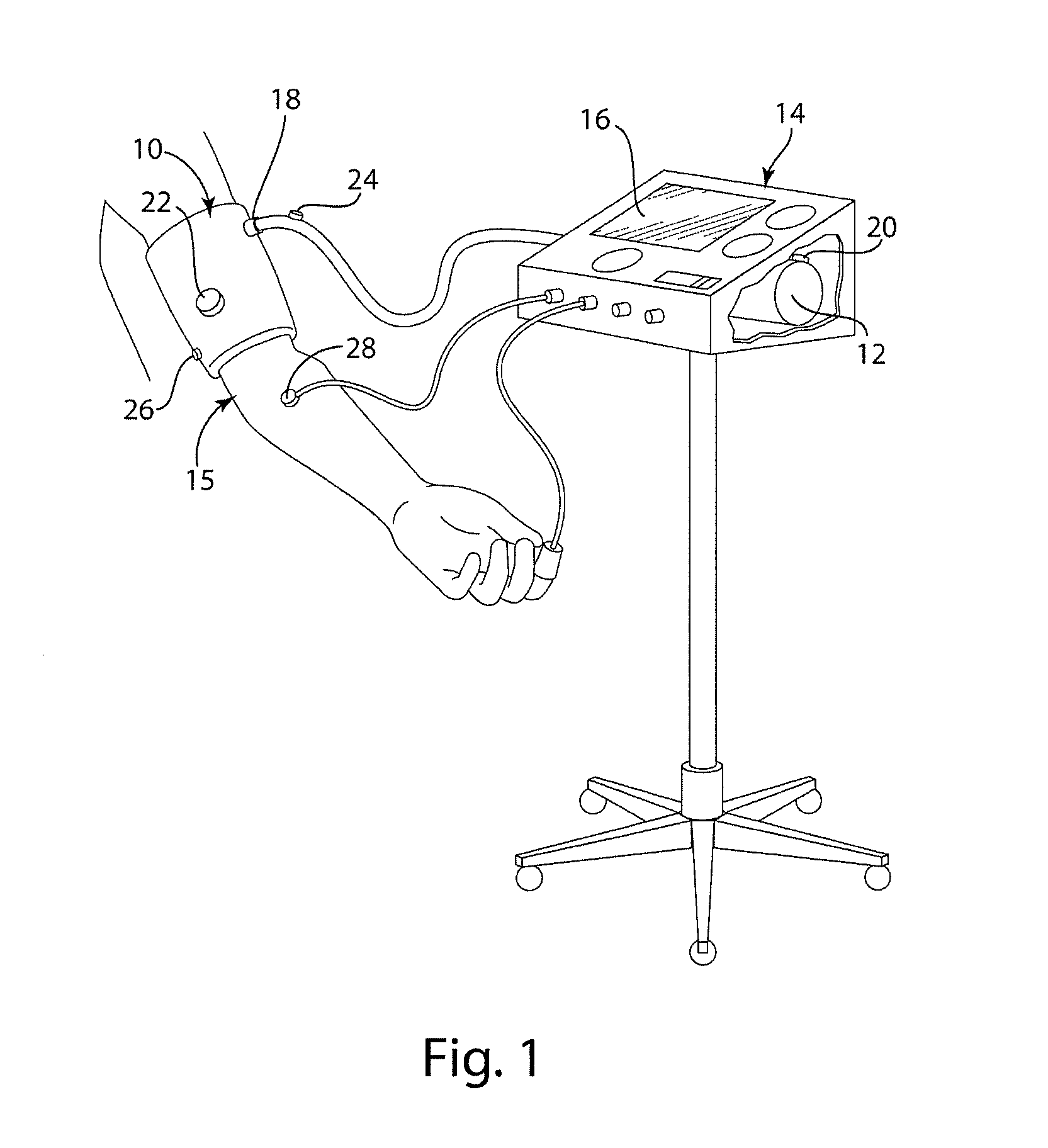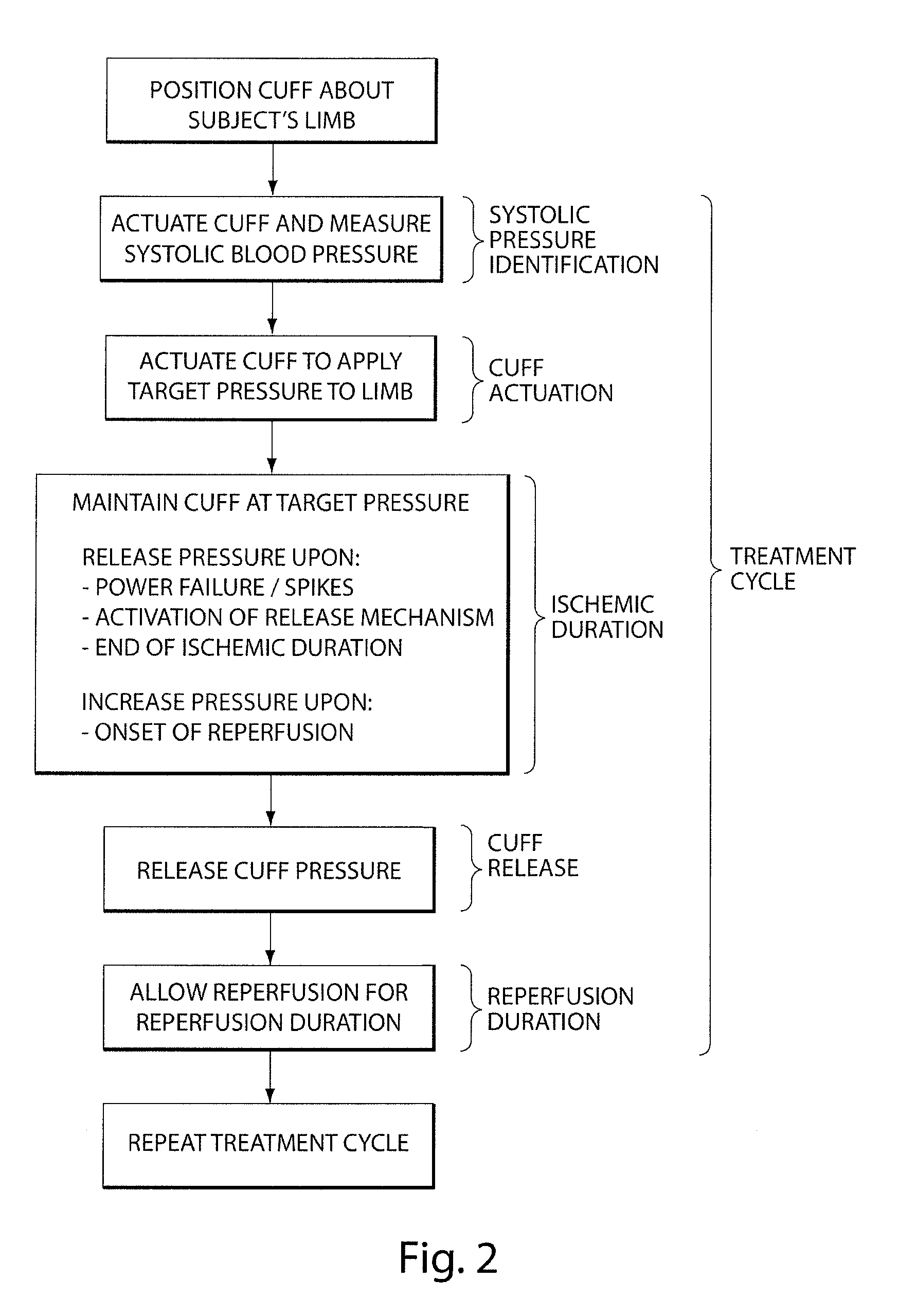Use of remote ischemic conditioning for traumatic injury
a technology of ischemic conditioning and traumatic injury, applied in the field of traumatic injury use of remote ischemic conditioning, can solve the problems of large health care expenditure, many interventions and/or therapies known to be useful, but not always available, and achieve the effect of reducing the effects of such trauma
- Summary
- Abstract
- Description
- Claims
- Application Information
AI Technical Summary
Benefits of technology
Problems solved by technology
Method used
Image
Examples
examples
[0114]Resuscitated hemorrhagic shock following trauma is known to contribute to the development of late organ dysfunction in those who survive the initial trauma insult and thus contributes to morbidity and mortality in this patient population. A number of mechanisms have been implicated in this process, but the activation of proinflammatory signaling cascades leading to cellular death directly via apoptotic pathways or alternatively through priming of the innate immune cell system have been shown to be contributory. Strategies directed at preventing the onset of these pathways would clearly have potential benefit in reducing attendant morbidity and mortality related to organ injury.
[0115]Remote ischemic conditioning (RIC), a process whereby distant vascular beds are temporarily rendered ischemic, protects organs from the effects of ischemia / reperfusion (I / R) injury. For example, transient remote vascular occlusion has been shown to be protective of I / R injury in the heart, liver, l...
PUM
 Login to View More
Login to View More Abstract
Description
Claims
Application Information
 Login to View More
Login to View More - R&D
- Intellectual Property
- Life Sciences
- Materials
- Tech Scout
- Unparalleled Data Quality
- Higher Quality Content
- 60% Fewer Hallucinations
Browse by: Latest US Patents, China's latest patents, Technical Efficacy Thesaurus, Application Domain, Technology Topic, Popular Technical Reports.
© 2025 PatSnap. All rights reserved.Legal|Privacy policy|Modern Slavery Act Transparency Statement|Sitemap|About US| Contact US: help@patsnap.com



